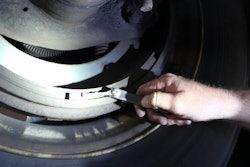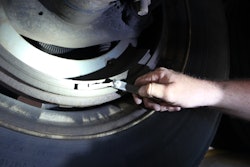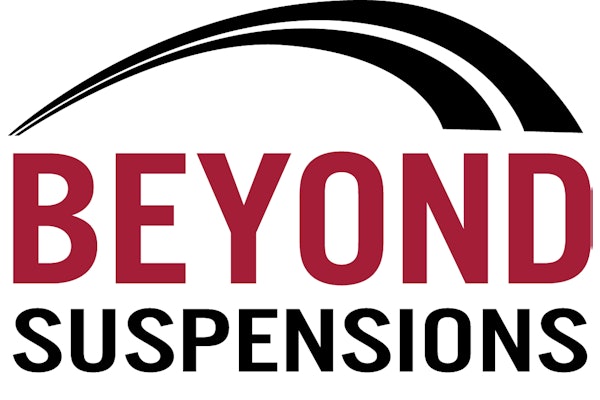When it comes to lighting system, terminology do you feel like you’re in the dark? Has the advent of light-emitting diodes (LEDs) left you confused and unsure of which acronym stands for which component?
Rest assured: Truck Parts & Service has talked to the industry’s lighting system experts, and they have cleared things up. The following glossary is designed to give you a clear picture of what comprises your customer’s lighting system, as well as to provide you with the appropriate methods of measuring power and current.
Alternating Current
Current that continuously reverses direction
American Wire Gauge (AWG)
A U.S. standard set of non-ferrous wire conductor sizes
Ampere (Amp)
A standard measure of electrical current
Base
Provides a foundation for the rest of the lamp, holds the socket and provides the mounting points
Boot
The end of a pigtail that attaches to a lighting device
Braided Cable
A flat cable made from bare woven wire, typically used as a ground cable for the lighting system
Bullet Connector
Rounded-end connector that fits into matching female socket for easy connecting and disconnecting
Butt Connector
Allows an end-to-end connection between
two conductors
Cable Ties
Flexible devices designed to hold groups of wire in bundles that employ a ratchet action to secure the tie at the correct diameter
Complete Circuit
A circuit that has a power source, a load such as a light or motor to power and a ground point
Conductor
Typically metal that forms the core of a wire or cable that carries an electrical current
Crimp
The process of inserting a conductor in the tubular portion of a connector and using a special tool to squeeze the tube until it grips the conductor and creates a strong mechanical and electrical connection
Current
The flow of electrons through a conductor
Dielectric
A material that is a poor conductor of electrical current, typically used as insulation for wire and cable and often applied as a coating to protect connections from moisture and corrosion
Diodes
Part of the alternator that converts the AC current from the alternator into DC current usable by the battery and other on-board devices
Direct Current
A current that flows in only one direction, typically used in electrical systems
Factory Sealed Refers to the type of lighting device that is sealed, is not accessible in the field and must be replaced if it fails
The Federal Highway Administration (FHWA)
Issues Federal Motor Carrier Safety Regulations dealing with vehicle lighting and wiring
Fiber Loom
A device made with asphalt for moisture protection, used to organize and protect wires
Field Replaceable
Refers to the type of lighting device that has a replaceable bulb that can be accessed in the field
Filament
The part of an incandescent bulb that glows providing light
The Federal Motor Vehicle Safety Standard (FMVSS) 108
In 1966, the U.S. Congress enacted the National Traffic And Motor Vehicle Safety Act, which authorized the Department Of Transportation to establish uniform safety standards for new vehicles.
These standards regulate such products as brakes, seat belts, steering wheels, gas tanks, etc. FMVSS108 regulates head lamps, tail lamps, stop lamps, reflectors, marker lamps, turn signals, ID lamps, etc.
Forward Lighting
Typically headlights and forward-facing utility lighting
Gauge
Designates the size of a conductor, typically the larger the number the smaller the diameter of the conductor
Ground
An electrical ground in effect drains away unwanted electrons after they have completed a task, such as creating light in a bulb. It can be literally the earth or large masses of metal, such as a truck frame.
Grounded Circuit
A type of short circuit where an accidentally bared conductor makes contact with a ground without completing the designed circuit
Halogen Bulbs
A filament type bulb with halogen gas for a whiter, longer lasting light; tungsten particles from the filament continually are redeposited back on the filament rather than on the bulb’s interior as is the case with incandescent bulbs
Heat Shrink Tubing
Tubing designed to protect a connection from moisture and damage by shrinking to a fraction of its initial size upon the application of heat
Hook Terminal
A type of connector similar to a ring terminal that has a slot cut out of it giving it a hook-like appearance
Incandescent Bulb
Typically a base with electrical contacts, glass enclosure and a filament that glows as current passes through, which produces light; the two basic incandescent bulb styles used most frequently in general lighting products are the bayonet base, a traditional widely used metal-based bulb, and the wedge base, a non-indexed bulb without a metal-based bulb
Insulation
Material which is essential and not conductive used to protect the conductor from accidentally being grounded
Jumper
A connector that bridges the space between the pigtail and the wiring harness
Lens
Typically the most visible part of the lighting device, adds the required color in many situations, protects the bulb and is engineered for best visibility
Light-Emitting Diode (LED)
Creates light when electrons pass from one plate to another and a photon is created; light is created with almost no heat or invisible light as byproducts
Linear Weld
A method of welding two similar plastic materials together by vibrating one part horizontally at a controlled rate against the other, producing heat and a hermetically-sealed bond
Loom
A device for organizing vehicle wiring, typically tubular, made to contain and control wires and to protect them from damage
Mounting Ties
Cable ties that have a hole for a screw or bolt to help secure the cable tie and wire bundle to the vehicle
The National Highway Traffic Safety Administration (NHTSA)
Publishes FMVSS 108 and regulates lighting requirements for most over-the-road vehicles
Ohm
A unit of measure of electrical resistance, it takes one volt to push one amp of current through one ohm of resistance
Ohm’s Law
Formulas that quantify the relationship between voltage, amperage and ohms
One-wire System
A circuit design that uses a nearby vehicle frame member for a grounding point rather than routing the ground wire back to the power source
Open Circuit
A circuit that has been interrupted, typically because of wire breaks and wires that have become detached from devices
Parallel Connection
A method of connecting lamps or other devices to a battery where each device has separate wires connected to the battery terminals, this maintains a constant voltage across each device, and if one device fails, the others still will function
Photometry
The calculation and measurement of quantities of light, such as luminous intensity, usually measured in candela or candlepower
Pigtails
Relatively short connecting cables that connect lights and jumpers
Potting
An operation of completely sealing the LED circuit board from moisture, contamination and damage
Resistance
Slowing the flow of electrons through a conductor
Ring Terminals
A type of connector that is shaped like an “O,” which fits over a stud making a secure connection
Sealed Beam
This type of lighting unit is essentially an incandescent bulb filament sealed inside a heavier, amiable glass enclosure
Series Connection
A method of connecting lamps or other devices to a battery where each load is connected along a single circuit of wire; this maintains a constant current to each device, and if one of the devices fails, the circuit will be broken and none of the devices connected to it will function
Short Circuit
A condition created when two bared conductors come in contact causing the current from one to be grounded before achieving the designed task
Sill Harness
A special type of wiring harness used in the rear of trailers to provide power to the lights in the rear
Socket
The part of a lighting device that holds a bulb and provides electrical contact
Submersible
A light that allows water into the unit when submerged; the bulb and socket are protected by an air pocket formed by the belljar principle, which permits only a certain amount of water to enter, not allowing water to come in contact with the bulb
Terminals
Fittings for use with wires and cables to connect them with other conductors and devices
VAT
Voltage/Amperage Tester
Volt
A measure of force which causes one amp of current to flow through a conductor with one ohm of resistance
Wiring Harness
A set of unitized wires, typically color coded that form the backbone of vehicle lighting systems
Xenon
A bulb type commonly used in emergency warning lights; it refers to an additive in the gas sealed inside the headlights and serves as a starter in order to accelerate the start up process of high-intensity discharge headlights
Editor’s Note: Truck Parts & Service would like to thank Grote Industries, Peterson Manufacturing Co., Phillips Industries and Truck-Lite Co., Inc. for providing information used in this article.
Fog vs. Driving Lights
There has been some confusion about how to differentiate a fog light from a driving light. In order to alleviate misunderstandings, Peterson Manufacturing Co. has defined a fog light beam pattern and a driving light beam pattern.
A fog beam provides a low, wide pattern to greatly increase short-range visibility, and is ideal for added driving safety in rain, snow or fog.
A driving beam produces a long-range, pencil-shaped light pattern, and is said to greatly increases nighttime visibility at highway speeds.
For More Information
For more information on the lighting system, you may contact the following companies directly. Other companies offering information on lighting systems can be found in the Truck Parts & Service Aftermarket Buyers’ Guide & Directory as well as in the Buyers’ Guide section on our Internet web site at www.truckpartsandservice.com.
Federal-Mogul Corp.
Wagner Lighting
Southfield, MI
248-354-7700
www.federal-mogul.com
Grote Industries, Inc.
Madison, IN
812-273-2121
www.grote.com
Peterson Manufacturing Co.
Grandview, MO
816-765-2000
www.pmlights.com
Phillips Industries
Santa Fe, CA
800-423-4512
www.phillipsind.com
Truck-Lite Co. Inc.
Falconer, NY
800-562-5012
www.truck-lite.com









